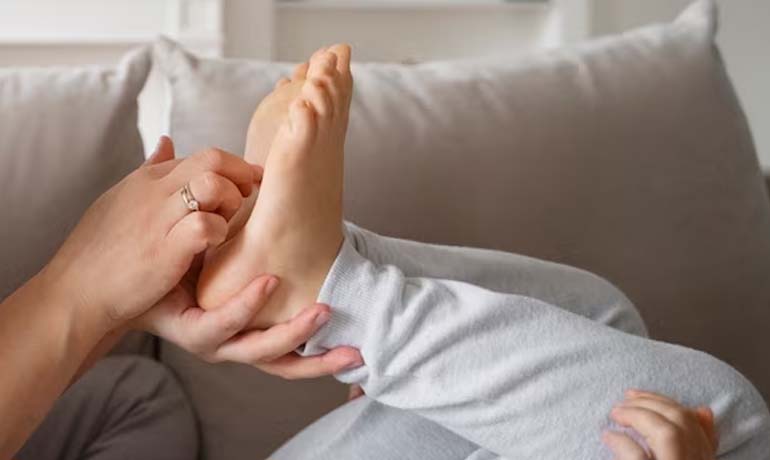BUNIONS
Bunion commonly known as a bony bump that is formed on the joint located at the base of the big toe due to dislocation of some of the bones of the foot often causing the tip of the big toe gets pulled towards the smaller toes and will force the joint at the base of your big toe to stick out and the skin present over the bunion might become red and sore.
When smaller bony bumps develop on the joint located over the little toe and this condition is called a bunionette.
Signs and Symptoms:
The signs and symptoms that indicates the presence of bunions are;
- Bulged or swollen bone bump on the outer side of the base of the bigger toe.
- Swelling, redness or soreness around the big toe joint.
- Formation of corns or calluses due to rubbing of the first and second toes against each other.
- Continuous pain or on and off pain.
- Discomfort in the extended movement of the big toe.
Causes:
The cause of bunions is idiopathic, but there are many theories and those theories are;
- Inherited foot type.
- Stress on the foot and injury to the foot.
- Deformities of the foot present by birth.
- Past medical history of inflammatory conditions such as rheumatoid arthritis.
Risk factors:
Risk factors are those which might increase the risk of bunions;
- Wearing high heel shoes that forces toes into the front of your shoes by crowing your toes.
- Wearing shoes that are of ill size which may be either too tight, too narrow, or too pointed are likely to develop bunions.
- People suffering from inflammatory conditions like rheumatoid arthritis are more prone to develop bunions.
- Risk to develop bunions with history of inheritance with the structure and anatomy of the foot.
Diagnosis:
Physical examination and imaging techniques such as foot X-ray can help to determine the best therapy to treat the bunions.
Treatment:
Treatment solely depends on the severity of bunion and severity of the pain and the treatment options includes;
Conservative Treatment:
Conservative treatment is a non surgical treatment that helps in relieving the pain and the pressure that is caused by bunion and conservative treatment options will includes;
- Change to the shoes that are roomy, comfortable providing plenty of space to the toes.
- Usage of the bunion pads and cushions that are non medicated will act as a support between foot and shoes and also relieve pain.
- Analgesics like acetaminophen, ibuprofen, naproxen and cortisone injections are best in the market to relieve pain.
- Usage of padded shoe inserts will help in distributing the pressure evenly while moving the leg and also reducing the symptoms and also preventing the condition from becoming worse.
- Icing the feet for a period of every 15 to 20 min at regular intervals for the entire day will help relieve soreness, redness and swelling.
Surgical Treatment:
If conservative treatment doesn’t help you then the last chosen option is surgery and there is no proven technique that is best for bunions but studies shows that surgical procedure for bunions can be done either as a single procedures or in combination and these might includes;
- Removal of swollen tissue located around your big toe joint.
- Straightening the bony bump by removing the affected part of the bone.
- Realignment of one or more bones located in the forefoot to normal position to correct tha abnormal angle in your big toe joint.
- Joining the bones of the affected joint permanently.
After the procedures the patient would be able to walk immediately but for complete recovery from the bunions it can take weeks to months and inorder to prevent the recurrence maintain proper shoes and avoid narrow shoes that will compress and pressurise the legs. https://www.algcure.com/bunion/
